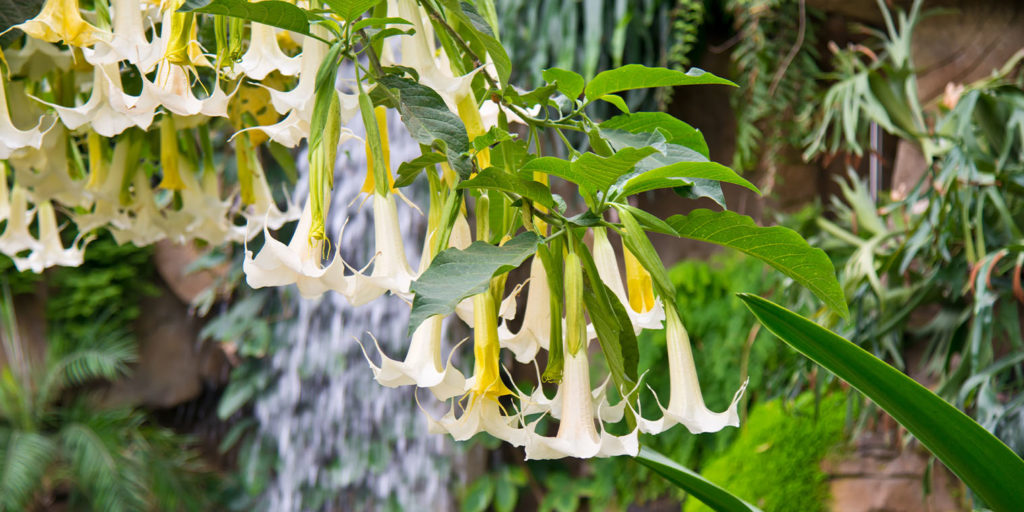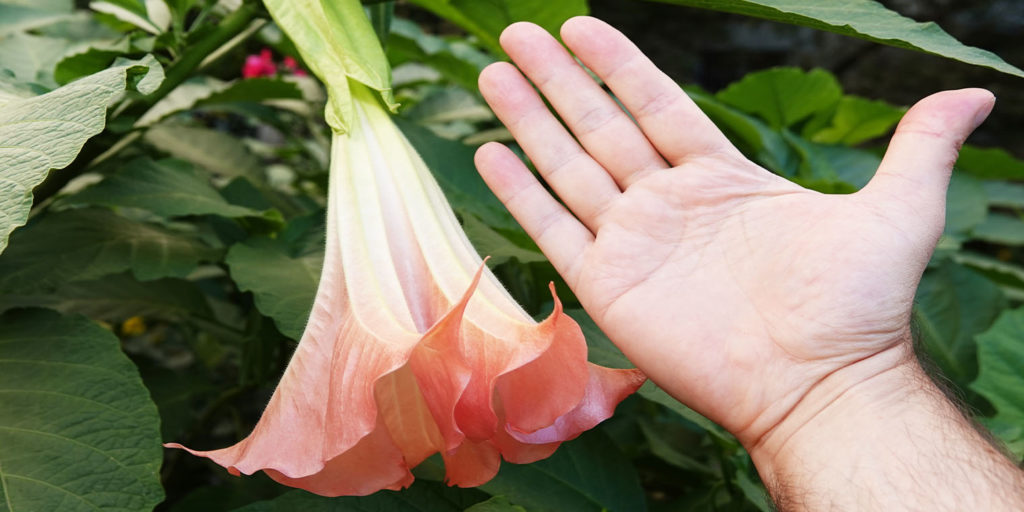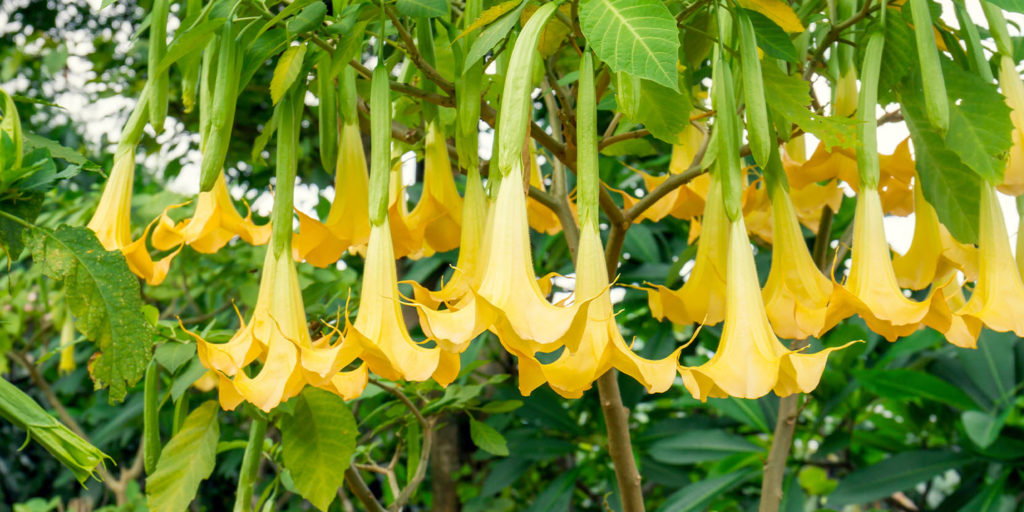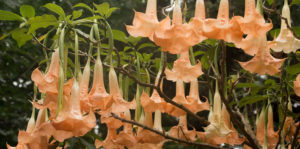The Angel’s Trumpet never fails to impress. Grown as a small ornamental tree or shrub, this distinctive plant has fabulous flared blooms that hang down like the trumpet skirt of a fancy wedding gown! They grow plentifully in clusters, fluttering in the breeze like an ensemble of Flamenco dancers. They can live for several decades with the right care, so they’re certainly a worthwhile addition to your garden. Here’s how to grow and care for them here in Fort Lauderdale!
How Do You Care for Angel’s Trumpet?
Also known as Brugmansia, this versatile plant is Native to South America and is excellent for landscaping planting or container gardens. It’s hardy to USDA zones 9–11, so we can keep it outside all year long in Southern Florida, but folks in cooler climates can overwinter them indoors if they’re in pots. Here’s what you need to know to keep these blooming beauties happy.

Sunlight and Water
While Angel’s Trumpet typically thrives in bright, direct sun, the sunshine in Florida can get pretty intense. You may find you’ll have the best results if you plant Angel’s Trumpet in a spot that gets direct sun in the morning, followed by shade from the intense afternoon sun.
Water your Angel’s Trumpet frequently—you may need to water it every day during the hottest summer months or if it’s grown in a container. Maintain a consistent watering schedule to avoid stressing out your plant and avoid overdoing it with the water. It likes moist conditions, but too much of a good thing can have adverse effects!
Soil
This plant thrives in acidic soil, so it’s a good idea to perform a pH test before planting to check out your soil conditions. Mixing in lots of fresh compost and peat moss into the soil will help to acidify the growing conditions.
Angel’s Trumpet prefers moist soil, but it needs to be loose and well-draining to prevent stagnant moisture buildup. That’s a recipe for root rot and fungal growth! Compost and peat moss will also help improve drainage on top of lowering the pH, so you won’t want to skip that step. Spread a layer of mulch across the soil to shield it from the hot sun—this will help slow down the evaporation of water, keeping your plants hydrated longer.

Fertilizer
With so many incredible blooms and a lightning-fast growth speed of 2–3 feet per year, it’s no surprise that Angel’s Trumpet is a heavy feeder! You’ll need to fertilize frequently with a water-soluble formula from spring to fall to keep your plant growing steadily. During the first few years of life before they begin blooming, you can use a balanced, all-purpose fertilizer once every week—yes, you read that correctly! Once it begins to approach its blooming phase, you can use a fertilizer with a slightly higher amount of phosphorus—the second number in the NPK ratio—which will help encourage even more of those spectacular flowers to appear.
Pest and Disease Control
There are several plant pests that target Angel’s Trumpet, but luckily, a neem oil solution will work great at killing those mischievous bugs. Stay on the lookout for signs of common pests like aphids, cabbage worms, spider mites, slugs, snails, and mealybugs.
Angel’s Trumpet is vulnerable to Verticillium and Fusarium wilt—incurable viruses that often attack vegetable plants like tomatoes and peppers. They inhibit moisture uptake, which leads to wilting, dehydrated foliage. To slow the spread of these viruses, practice crop rotation, use fresh soil, and always sterilize your containers thoroughly before putting something new inside.

Why Isn’t My Angel’s Trumpet Plant Blooming?
Angel’s Trumpet takes 4–5 years to begin blooming, so don’t be discouraged if you don’t see any blooms for a few years after planting. Regular fertilizing and water are an absolute must, and the more sunshine it receives, the better! Be sure your Angel’s Trumpet receives at least 6 hours of direct sun every day.
On the hunt for an Angel’s Trumpet plant for sale in Fort Lauderdale? Visit Living Color Garden Center to explore all the beautiful varieties available in stunning shades of yellow, peach, pink, orange, and white.

